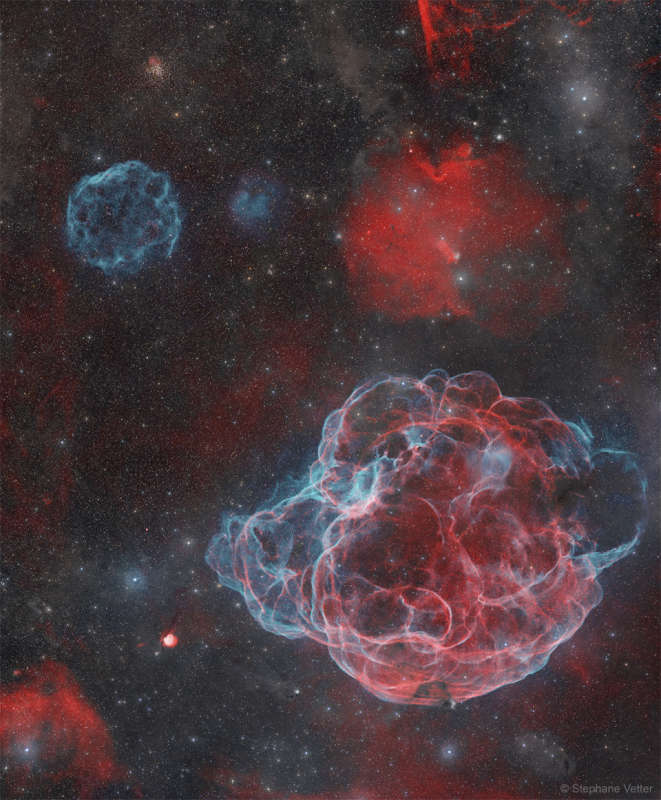
|
Credit & Copyright: Stéphane Vetter
(Nuits sacrées)
Explanation:
What happens after a star explodes?
A huge fireball
of hot gas shoots out in all directions.
When this gas slams into the existing
interstellar medium,
it heats up so much it glows.
Two different
supernova remnants (SNRs)
are visible in the featured image, taken at the
Ouka÷meden
Observatory in
Morocco.
The
blue soccer ball-looking nebula toward the upper left is
SNR G179.0+02.6, which appears to be the smaller one.
This supernova, about 11,000 light years distant,
detonated about 50,000 years ago.
Although composed mostly of
hydrogen gas, the blue light is emitted by a trace amount of
oxygen.
The seemingly larger SNR, dominating the lower right of the frame, is the
Spaghetti Nebula, cataloged as
Simeis 147 and sh2-240.
This supernova, only about 3,000
light years away, exploded about 40,000 years ago.
Comparatively, even though they appear different sizes, both supernova remnants
are not only roughly the same age, but about the same size, too.
|
January February March April May June July August September October November December |
| ||||||||||||||||||||||||||||||||||||||||||||||||
NASA Web Site Statements, Warnings, and Disclaimers
NASA Official: Jay Norris. Specific rights apply.
A service of: LHEA at NASA / GSFC
& Michigan Tech. U.
Based on Astronomy Picture
Of the Day
Publications with keywords: supernova remnant
Publications with words: supernova remnant
See also:
- APOD: 2025 October 1 ┴ NGC 6960: The Witchs Broom Nebula
- APOD: 2025 June 9 ┴ Between Scylla and Charybdis: A Double Cosmic Discovery
- Supernova Remnant Cassiopeia A
- APOD: 2024 September 18 ┴ The Mermaid Nebula Supernova Remnant
- APOD: 2024 April 16 ┴ Filaments of the Vela Supernova Remnant
- APOD: 2024 April 3 ┴ Unusual Nebula Pa 30
- APOD: 2024 March 25 ┴ Sonified: The Jellyfish Nebula Supernova Remnant
